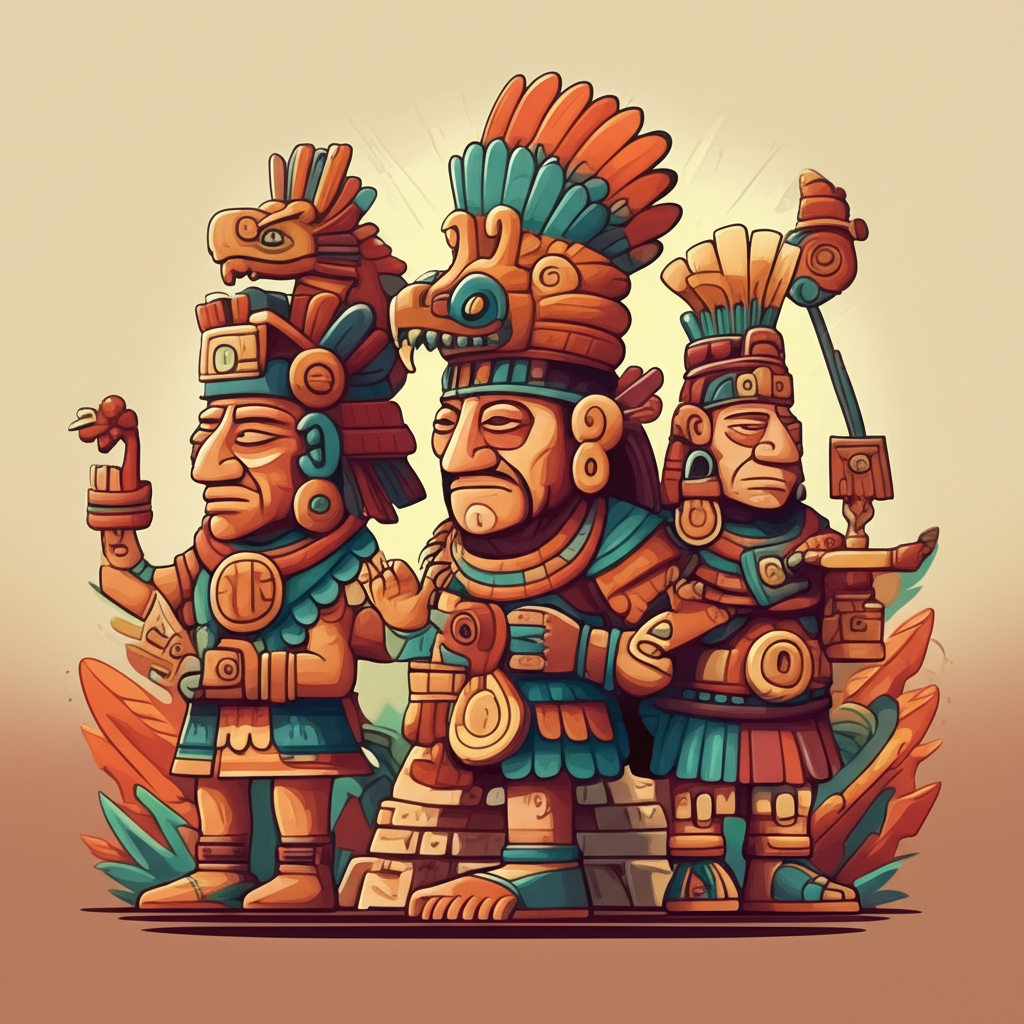
The winds that whisper through the sun-baked stones of Teotihuacan carry echoes of a civilization long past. This magnificent ancient city, nestled in the Valley of Mexico, was once a vibrant hub of human endeavor, a testament to ingenuity and spiritual exploration. From this rich tapestry of history emerges the story of the Feathered Serpent, a powerful and enduring figure in the mythology of Mesoamerica. It is crucial to understand that this is a traditional story, a narrative woven by ancient peoples to interpret their world, not a record of verifiable events or divine pronouncements.
The origins of this myth lie within the Pre-Classic and Classic periods of Mesoamerican civilization, a time when complex societies were flourishing, and sophisticated belief systems were taking root. The people who built and inhabited Teotihuacan, though their exact identity remains somewhat shrouded in mystery, lived in a world deeply intertwined with the cycles of nature. They observed the relentless march of the sun across the sky, the life-giving power of rain, the fertility of the earth, and the awe-inspiring presence of celestial bodies. Their worldview was animistic, attributing spiritual significance to the natural world, and their cosmology was rich with divine forces that governed the universe. The monumental pyramids of Teotihuacan, aligned with astronomical events, speak volumes about their meticulous observation and their desire to understand and appease these forces. The Feathered Serpent myth was a product of this environment, a way to explain the interconnectedness of the earth and the sky, the visible and the unseen.
The Feathered Serpent, known by various names across Mesoamerica, most famously as Quetzalcoatl, is not a creature of flesh and blood as we understand it, but a potent symbolic entity. Imagine a magnificent serpent, its scales shimmering with the iridescence of jewels. But this is no ordinary reptile. From its serpentine form sprout the vibrant, iridescent plumage of birds, most notably the quetzal, a bird revered for its brilliant green feathers. This fusion of the earth-bound serpent and the sky-dwelling bird is central to its symbolism. It represents the unification of opposing forces, the bridge between the terrestrial realm and the celestial heavens. The serpent itself often symbolizes fertility, the underworld, and transformation, while the feathers speak of air, wind, divinity, and the sky. It embodies a duality, a potent force capable of both creation and destruction, wisdom and power.
The narrative surrounding the Feathered Serpent is not a single, monolithic tale but a collection of stories that evolved over time and across different cultures. However, a recurring theme centers on its role as a benevolent creator, a bringer of knowledge, and a guardian of humanity. In many traditions, the Feathered Serpent is credited with shaping the very world and its inhabitants. One popular narrative describes how, in an age of darkness and chaos, the Feathered Serpent descended from the heavens, or emerged from the primordial waters, to bring order and light. It is sometimes depicted as a wise teacher, imparting the secrets of agriculture, astronomy, calendrical systems, and the arts to humankind. In some versions, it is also associated with the morning star, Venus, a celestial body that heralds the dawn, symbolizing renewal and the promise of a new day. The stories often portray it as a benevolent deity, intervening in human affairs to guide and protect, a source of wisdom and order in a complex and often unpredictable world.
The symbolism inherent in the Feathered Serpent is multifaceted and profound. For the ancient peoples of Teotihuacan and beyond, it likely represented the fundamental duality of existence: the earth and the sky, the underworld and the heavens, the tangible and the spiritual. Its feathered form suggested a connection to the divine and the celestial, while its serpentine aspect grounded it in the earthly realm, symbolizing fertility and the cycles of life and death. It could represent the life-giving power of rain, carried on the winds, or the wisdom that ascends from earthly observation to cosmic understanding. The creature’s dual nature also speaks to the balance of opposing forces that they believed governed the universe – light and darkness, creation and destruction, life and decay. It was a symbol of cyclical renewal, of transformation, and of the interconnectedness of all things.
In the modern world, the Feathered Serpent continues to capture the imagination. It appears in literature, art, and popular culture, often as a figure of ancient power and mystical significance. In historical fiction and fantasy novels, it might be reimagined as a dragon-like creature or a powerful deity. In video games, it can manifest as a formidable boss or a wise mentor. Archaeologists and cultural historians study its iconography in the ruins of Teotihuacan and other Mesoamerican sites, analyzing its presence in murals, sculptures, and artifacts to understand the beliefs and societal structures of these ancient civilizations. The Feathered Serpent serves as a powerful reminder of the rich mythological heritage of Mesoamerica, a testament to the enduring human need to create stories that explain our origins and our place in the cosmos.
It is important to reiterate that the story of the Feathered Serpent is a traditional narrative, a product of ancient human imagination and cultural interpretation. As Muslims, we understand that only Allah (God) is the true Creator and Sustainer of all existence. Our faith teaches that He alone is worthy of worship and devotion. These ancient myths, while fascinating from a cultural and historical perspective, do not alter our belief in the singular, all-powerful Creator. However, by exploring these narratives, we gain a deeper appreciation for the diversity of human storytelling traditions, the creative ways in which people have sought to understand their world, and the enduring power of myths to shape cultural identity across generations. The Feathered Serpent, in its vibrant symbolism and enduring presence, stands as a testament to the rich cultural heritage of Mesoamerica and the timeless human quest for meaning.



